During the morning of 24th August, a strange cloud appeared above the mountain. By 6pm the cloud was very obviously coming out of the mountain: a column of grey ash that divided like the branches of a Mediterranean umbrella pine. Before nightfall, ash started to fall onto the town. The stuff is actually not ashes at all, but volcanic rock in flakes small enough to drift down like dandruff. By midnight, it was lying several metres deep. Roofs were starting to collapse under the weight.
Along with the ash fell potato-sized lumps of pumice: quite light because of being mostly not stone but gas bubble holes. Fleeing townspeople found that pillows over their heads would protect them, but a naval rescue force was unable to land because of the floating pumice that blocked the harbour – the oars simply wouldn’t reach the water.
The dense ash clouds meant that darkness was complete – "like a sealed room in which the lamp has been blown out". They couldn't see the column of gas, almost red-hot, a kilometre wide, and rising vertically to a height of 33km, well into the stratosphere. Like a vertical windtunnel or flamethrower, the gas shooting upwards at hundreds of miles per hour carried the ash flakes, the pumice, and lumps of solid rock. The unhappy townspeople couldn't see it – but they could certainly hear it, a continuous roar, like an express train at rooftop level. Lightning flashed in the ash-cloud, and the earth shook continually.1
At about 1am, those still alive in the town noticed the fall of pumice and ash ease off, then stop. This was, in fact, the worst news of all. The convection column above the volcano had become unstable, and collapsed. Its contents – red-hot ash and pumice, floating like a hovercraft on a gust of hot gas and groundwater steam – now flowed down the mountainside at the speed of a fast car. About 20 minutes later, the airborne hot avalanche hit the town. Buildings were broken off at the level where they emerged from the lying ash. Those still in the town died at once, their lungs destroyed by their first breath of the gas. And through the night and the following day, more falling ash buried the town metres deep. The countryside around lay under ash, lost to farming for a century. The town itself was forgotten for the next 1500 years.
You may think that the fate of Pompeii and its neighbour Herculaneum has little to do with the Lake District. And you'd be quite right. What happened in the Lake District was far, far worse.
Fortunately for us it was also far, far longer ago. Volcanic ash, of the sort that fell on Pompeii, compresses into a featureless grey rock called “tuff”2. It's rough, and good to climb on. And climbed on it is: on Pikes Crag of Scafell, Striding Edge on Helvellyn, Jack’s Rake on Pavey Ark, Clogwyn Du’r Arddu on Snowdon and the Buttresses of Tryfan in Wales.3
When the going gets tuff, the scramblers get scrambling
Tuff types
As well as ash, pumice fell in rounded lumps on the heads of the Pompeii people, stones so gassy and bubbly that they could keep them off with those pillows. ‘Lapilli’, Latin for ‘little stones’, sprinkled through the tuff – it’s a rocky-road cake made with real rocks instead of just marshmallows…
Then again, some of the volcanic ash will fall into water. The rocks show that, even 450 million years ago, Lakeland had quite a lot of water. Water-fallen tuffs are beautifully striped in darker and paler greys. Currents in the water make the rock-layers wavy as well as stripy, and later earth movements have added further wiggles and frills. Writing of the stones of Scafell, climber Bill Birkett says he prefers this sedimentary tuff stuff to anything you go and see in an art gallery.
But for many, it isn't seen at all. Strange sympathetic looks I get when peering at the path stones, from people who wonder whether I've dropped my contact lenses. "Another lovely photo for the album," remarked a sarcastic walker as I crouched over a lusciously lumpy lapilli tuff on Glyder Fawr. If he came and peered at the rock alongside me, he'd be looking just as silly as I do.
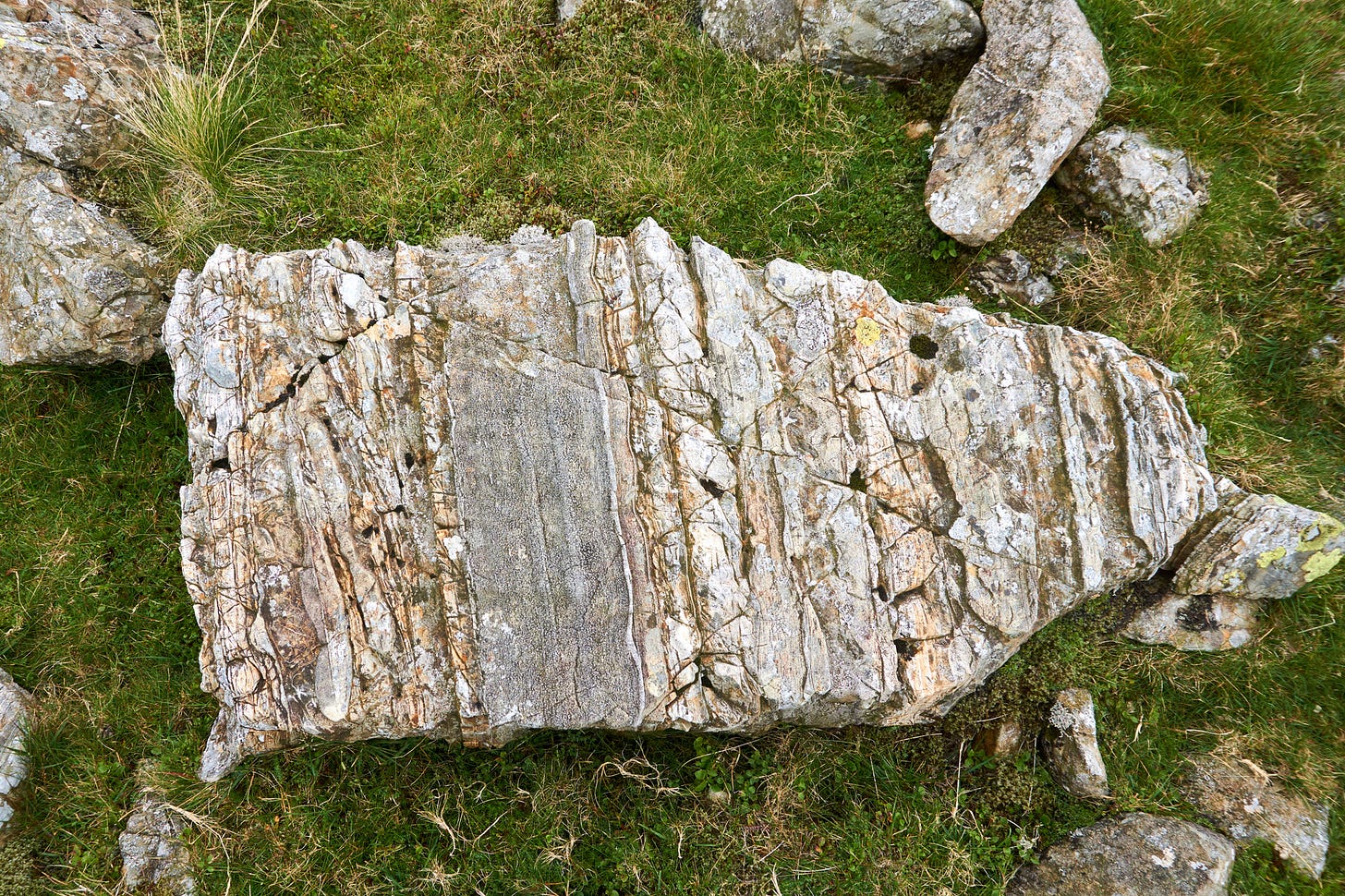
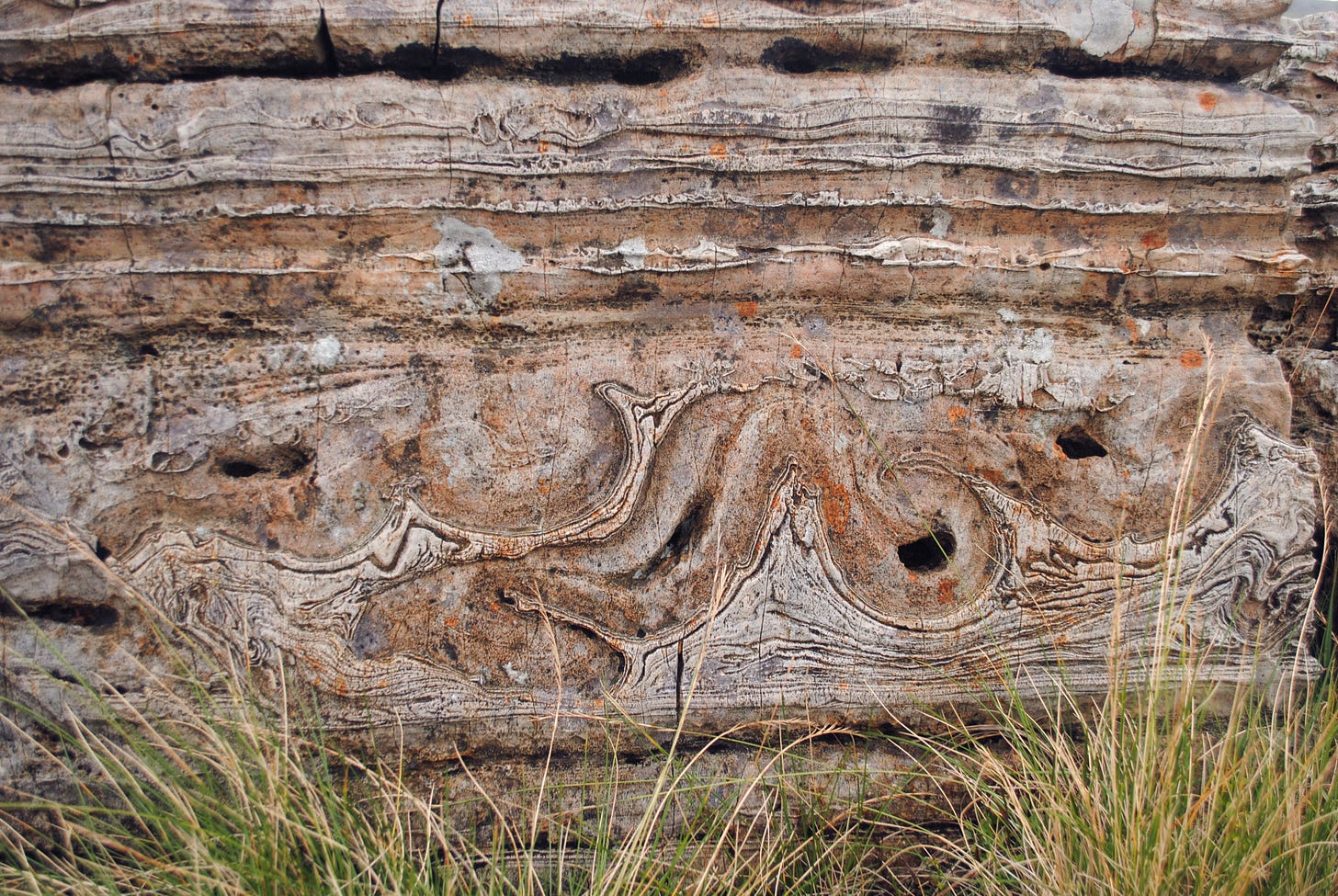
Compared with the metres of fallen ash, the sky-high pillar of fire, the boulders falling out of the sky – a landslide down the side of a volcano might sound slightly tame. It isn't, though. The worst of all the various things that happened at Mount St Helens in 1980 was a landslide. The mountain was bulging because of the lava pushing up from below; but the landslide was just ordinary stones and dirt. Stones and dirt that made up about one tenth of the mountain; and the shock wave, as it pushed away the air in front of it, destroyed forest over 200 square miles. A watcher in a hut a safe six miles way from the mountain – well, he wasn’t safe at all. They never even found the hut.
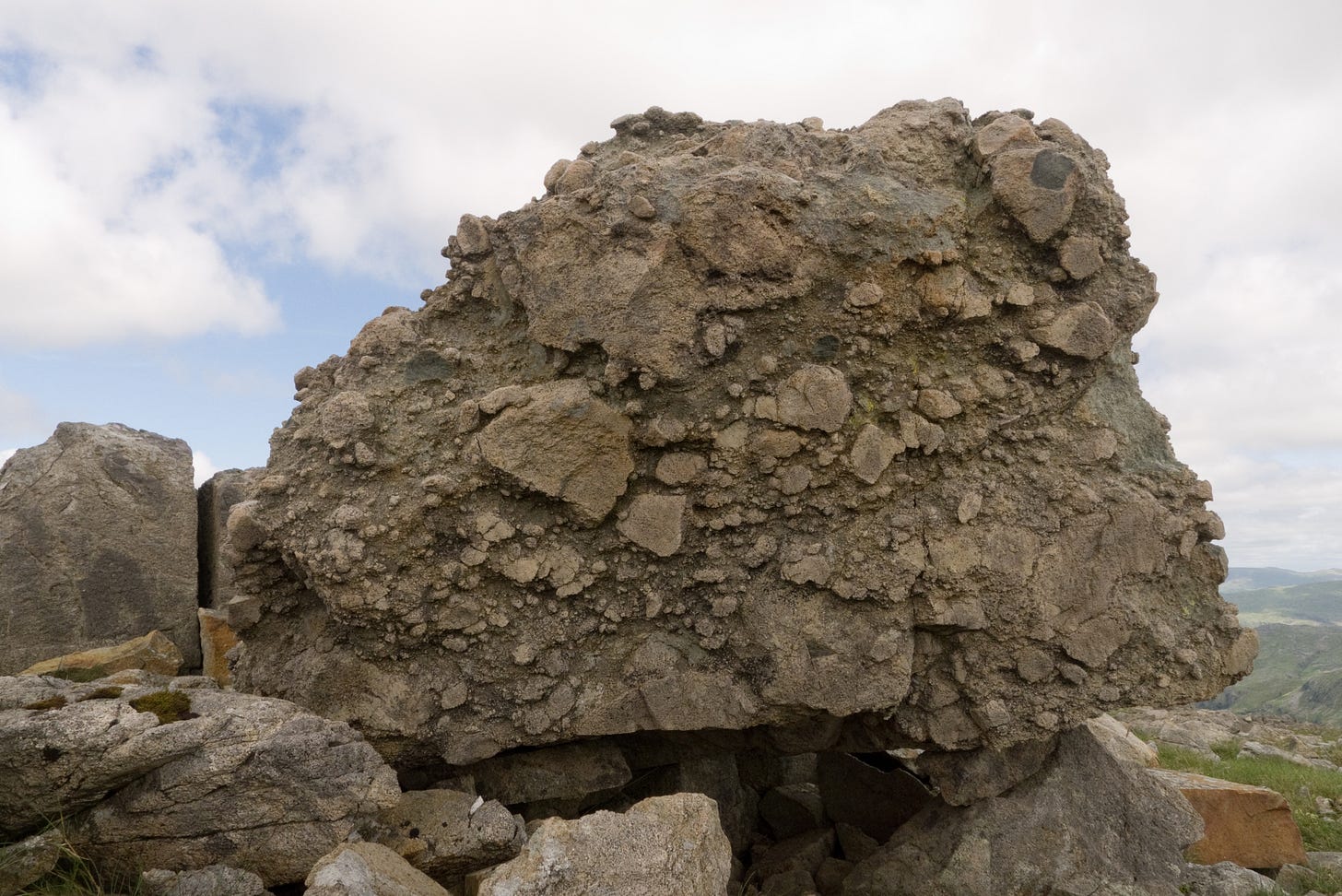
But remember the red-hot flying avalanche that was the real killer at Vesuvius? It comes down on you at 60 mph, trailing a grey cloud of steam and ash hundreds of metres high. It's called a nuée ardente, which is French for a burning, or passionate, cloud.4 Very few people have seen one and been still alive afterwards. Some geologists found one in Alaska (Mt Katmai) that had happened four years before, but they were still able to use the heat of it to fry their sausages. Well, they were until the hot volcanic gasses dissolved their frying pan.
The ash-and-pumice avalanche comes to rest still red hot. As it settles, it welds together, and the soft pumice lumps get squashed flat. The rock is called 'ignimbrite', meaning fire-cloud-rock.

The advantage of studying stones is that, when cloud and mist close off your view, it gives you something interesting to look at. Good Welsh or Lakeland rain actually brings out the textures and patterns. And then, when the sun comes out again, you get to enjoy it even more: climbing the lovely V Diff routes on Tryfan, or scrambling up Harrison Stickle.
The admiral trying to get into the harbour was Pliny the Elder, the leading natural scientist of the zero-seventies. He would die from breathing the volcano’s toxic gases; the writeup is by his nephew Pliny the Younger.
Some pronounce ‘tuff’ to rhyme with roof rather than with rough, thus destroying every pun in this newsletter. But it does have the advantage of letting ignorant non-geologists confuse it with ‘tufa’, a kind of limestone deposit. Geologists lead such austere, rocky lives that any chance to laugh at non-geologists has to be appreciated.
Other great climbing crags are formed from volcanic sills, thick slabs of lava forced out by the volcanoes between existing rock-layers: Great Gable, Pillar Rock and Dow Crag in the Lakes; Y Lliwedd on Snowdon.
Also known as a pyroclastic flow, meaning broken stones of fiery origin.


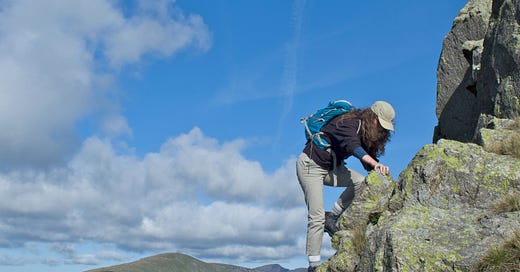


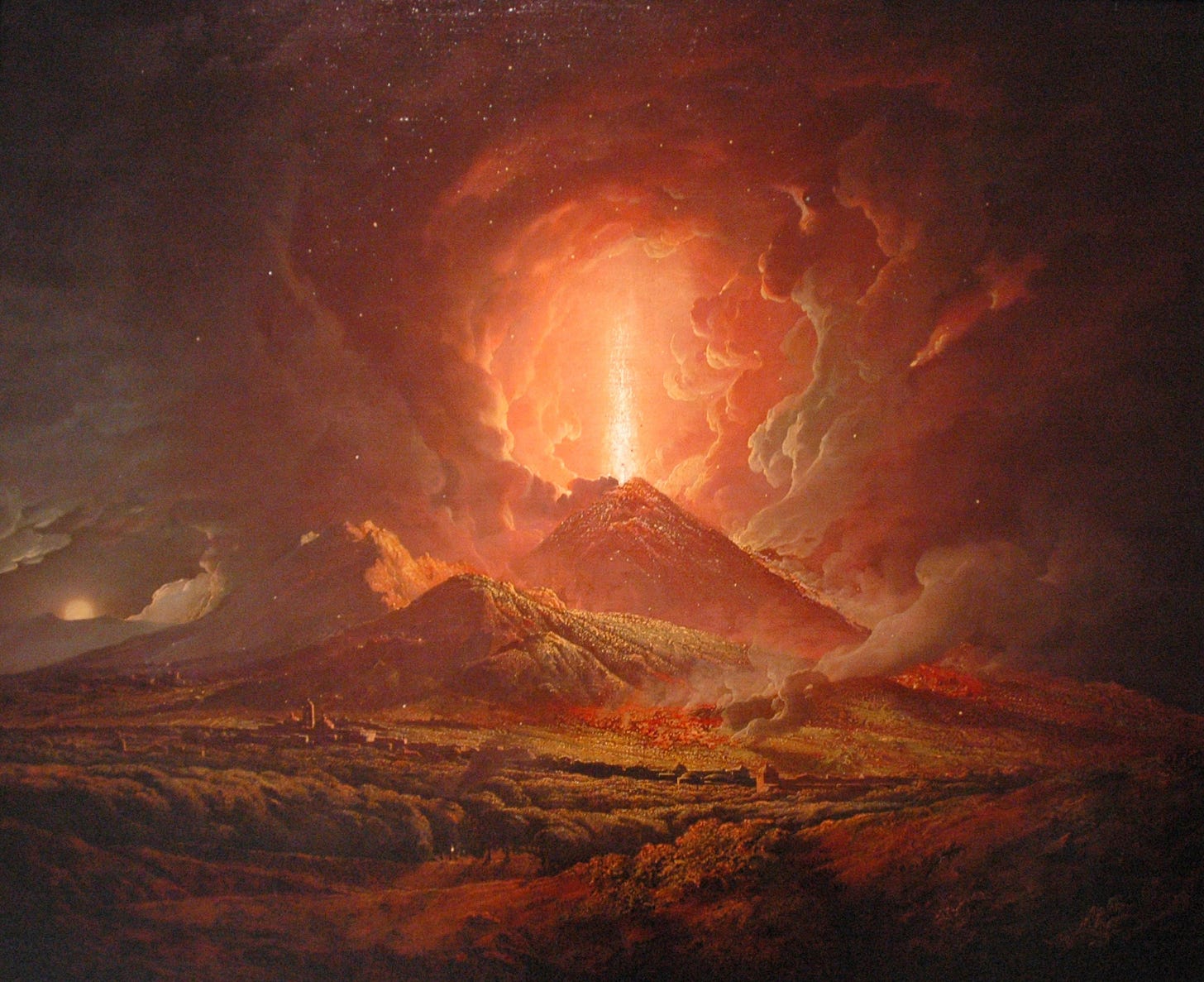

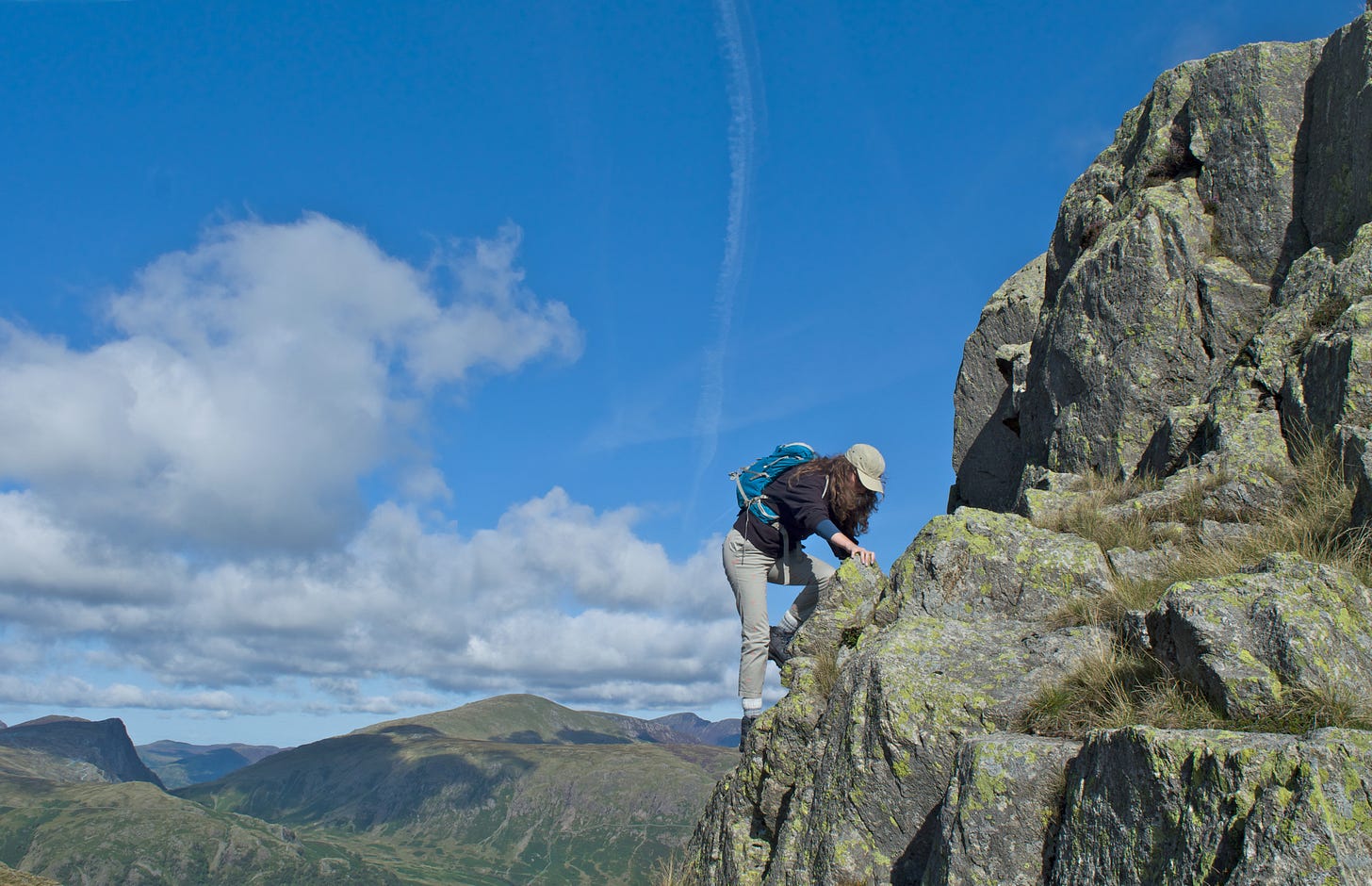
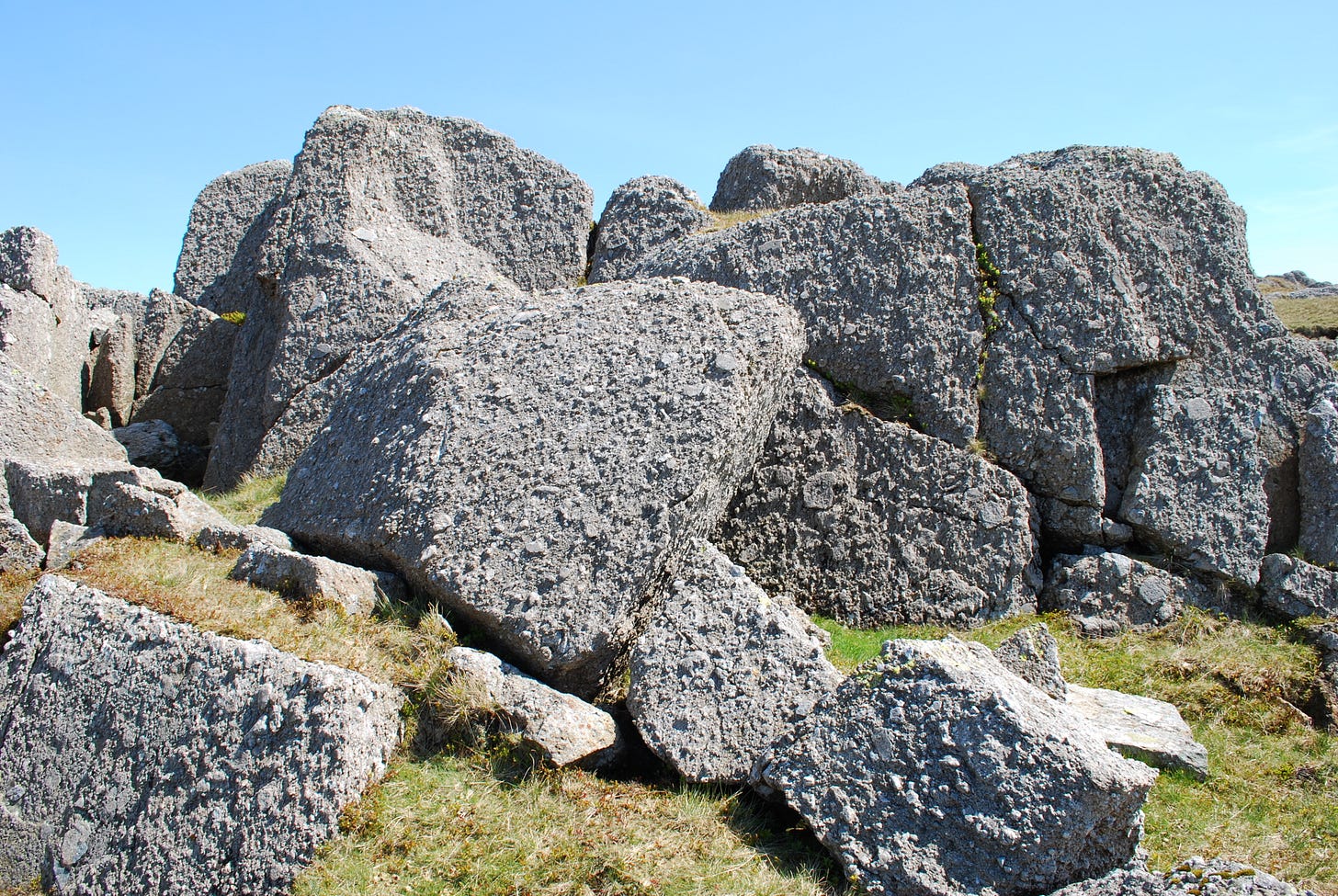

Not a tuff read at all.
Love the weird and wonderful patterns left in volcanic rocks - transforms them into works of art!